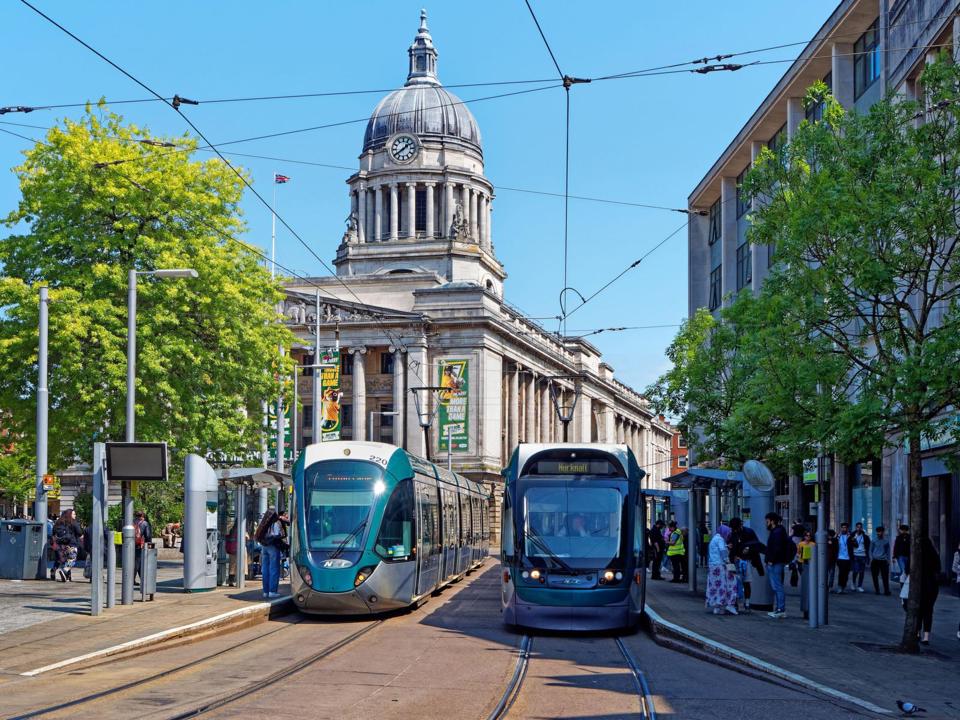There are both positive and negative aspects of having written this column for nearly 30 years.
On the one hand, I have learnt from experience - and that is incredibly valuable at times. But on the other, there is the trap of becoming cynical, of dismissing every positive development as bound to fail.
There are both positive and negative aspects of having written this column for nearly 30 years.
On the one hand, I have learnt from experience - and that is incredibly valuable at times. But on the other, there is the trap of becoming cynical, of dismissing every positive development as bound to fail.
I have strived all my life to avoid the latter, as no one wants to read about an old man’s pessimistic moaning, and I will continue to do so. Hope has to be in the air - otherwise we all may as well give up and watch daytime TV on a permanent loop.
Therefore, let us give at least one, possibly two, cheers to the fact that trams are back on the political agenda.
It was dear old John Prescott who really embraced the concept when, in his Transport 2010 paper (published in 2000), he promised there would 25 tram schemes initiated over the next ten years - although in fact only one, a new line in Nottingham, was built within that timescale.
Therefore, one has to be slightly wary of Chancellor Rachel Reeves’ new commitment to trams, which includes schemes in Manchester, West Yorkshire and the West Midlands.
There are sums of money attached to each of these, but as various political columnists have pointed out, this by no means guarantees that any of them will be built.
The problem for Prescott was that he did not really have buy-in from the rest of the Cabinet - in particular from Alastair Darling, who (both as Transport Secretary and later Chancellor) killed off so many tram schemes that it seemed he had a personal vendetta against them. Liverpool, Leeds, Gosport and several others all fell under the axe.
Darling died in 2023 and Prescott in 2024, which left me musing whether the former would have been proud of the fact that the people of Leeds never got their trams, whereas Prescott, to his credit, had High Speed 1 and various other projects he could have been proud of.
It’s not easy batting for transport projects, in the context that transport spending is skewed by the fact that a quarter of the annual budget for investment (£7 billion annually out of around £29bn) is eaten up by HS2.
Without that, there would be more to spare, and there is always the danger that this huge money sink will require filling up again at some point during this Parliament.
But, as an optimist, let’s hope that Reeves means to support the idea of trams, because Britain is well behind other countries in supporting light rail.
As pointed out in Back on Track (an excellent pamphlet by Britain Remade, a pressure group for industries seeking to build infrastructure), we are particularly bad both in terms of the number of schemes in the country, but also in relation to how much they cost to build.
We were once world leaders in tramways, a form of transport that was cheap as well as being fast and effective.
Yet, in what was one of the worst transport decisions ever made, all the tramway systems in the UK (apart from plucky old Blackpool) were scrapped in the post-war obsession with the idea that cars were the only viable way of getting around.
The great tram revival spreading across the world has largely passed Britain by.
Only seven cities can boast trams in the UK. Contrast this with China, a country which went through a rapid period of motorisation over the past 40 years, but where there is now a great emphasis on building both light rail and subway schemes.
No fewer than 35 tram lines have been built in China since 2010, while closer to home, in France, 21 cities have had new lines this century.
Even in the US, where public transport is treated as an alien concept, some 27 towns and cities have at least one light rail line.
One of the reasons for the lack of enthusiasm behind tram schemes is the cost.
I have just been to Edinburgh, where the tram system has just been extended. But that is only because the initial scheme had to be cut back, in response to costs which soared above £1bn for what became just an 11-mile line. Yet the public now loves it, and annual patronage exceeds ten million.
That is a typical example of the high costs of building schemes in the UK. Britain Remade’s pamphlet points out that in Britain a mile of tramway costs £87 million to build - more than double the average across Europe of £42m.
As well as speeding up the planning system (something that Sir Keir Starmer’s government does seem to be making progress on), there are three other recommendations to reduce costs.
Firstly, the Department for Transport should create a special delivery unit to bring forward schemes and create established standards for new schemes.
Secondly, crucially reduce the cost of utility removal (a huge burden for schemes) by making sure that only really essential pipes and wires are moved.
In fact, new methods of adapting utilities transmission are being developed, notably for the Very Light Rail project in Coventry, which would enable far cheaper construction.
Thirdly, local authorities (particularly the new system of mayors) should be given more powers to raise money to fund schemes which are often popular and much needed locally.
None of this is rocket science. Yet even though most of these problems and solutions have been known about in transport planning circles for years, nothing has changed.
Therefore, Reeves’ new commitment to trams should be in the context of making changes to the system to enable these schemes to become a reality.
As Britain Remade argues, trams have huge advantages over other forms of urban transport.
A single lane of a city street can carry 1,500 people in cars, 8,000 in buses, but a staggering 22,000 if used as a tramway. Moreover, people can be attracted onto trams out of their cars, because of the comfort and reliability. Around 30% of tram passengers in Nottingham would otherwise have driven.
Everything points to the need for more trams in cities, which become an emblem of modernity and progress, with pictures of modern trams invariably featuring on local tourist and promotional material.
Let’s hope Reeves is genuinely behind these schemes and that ways to reduce costs, as suggested, can be deployed.
Login to continue reading
Or register with RAIL to keep up-to-date with the latest news, insight and opinion.



















Login to comment
Comments
No comments have been made yet.